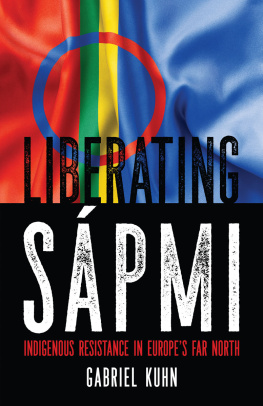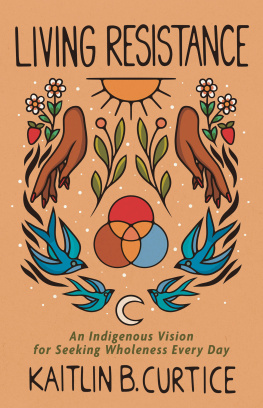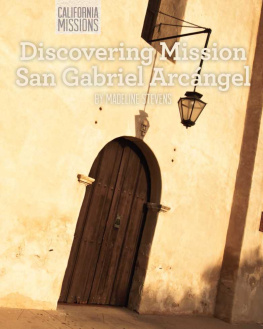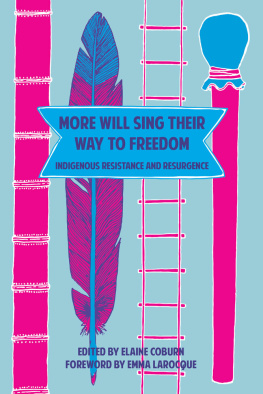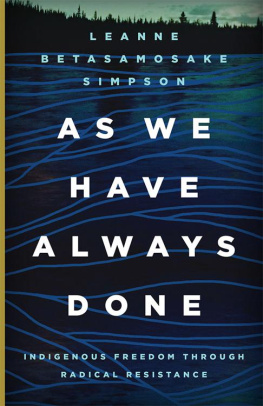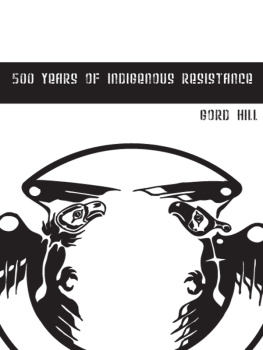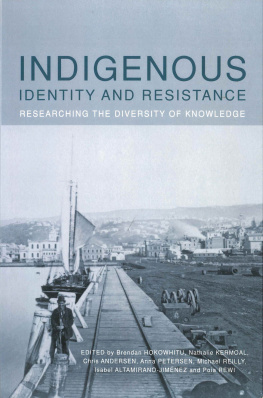Gabriel Kuhn - Liberating Sápmi: Indigenous Resistance in Europes Far North
Here you can read online Gabriel Kuhn - Liberating Sápmi: Indigenous Resistance in Europes Far North full text of the book (entire story) in english for free. Download pdf and epub, get meaning, cover and reviews about this ebook. year: 2020, publisher: Independent Publishers Group, genre: Politics. Description of the work, (preface) as well as reviews are available. Best literature library LitArk.com created for fans of good reading and offers a wide selection of genres:
Romance novel
Science fiction
Adventure
Detective
Science
History
Home and family
Prose
Art
Politics
Computer
Non-fiction
Religion
Business
Children
Humor
Choose a favorite category and find really read worthwhile books. Enjoy immersion in the world of imagination, feel the emotions of the characters or learn something new for yourself, make an fascinating discovery.
- Book:Liberating Sápmi: Indigenous Resistance in Europes Far North
- Author:
- Publisher:Independent Publishers Group
- Genre:
- Year:2020
- Rating:3 / 5
- Favourites:Add to favourites
- Your mark:
- 60
- 1
- 2
- 3
- 4
- 5
Liberating Sápmi: Indigenous Resistance in Europes Far North: summary, description and annotation
We offer to read an annotation, description, summary or preface (depends on what the author of the book "Liberating Sápmi: Indigenous Resistance in Europes Far North" wrote himself). If you haven't found the necessary information about the book — write in the comments, we will try to find it.
Liberating Sápmi: Indigenous Resistance in Europes Far North — read online for free the complete book (whole text) full work
Below is the text of the book, divided by pages. System saving the place of the last page read, allows you to conveniently read the book "Liberating Sápmi: Indigenous Resistance in Europes Far North" online for free, without having to search again every time where you left off. Put a bookmark, and you can go to the page where you finished reading at any time.
Font size:
Interval:
Bookmark:
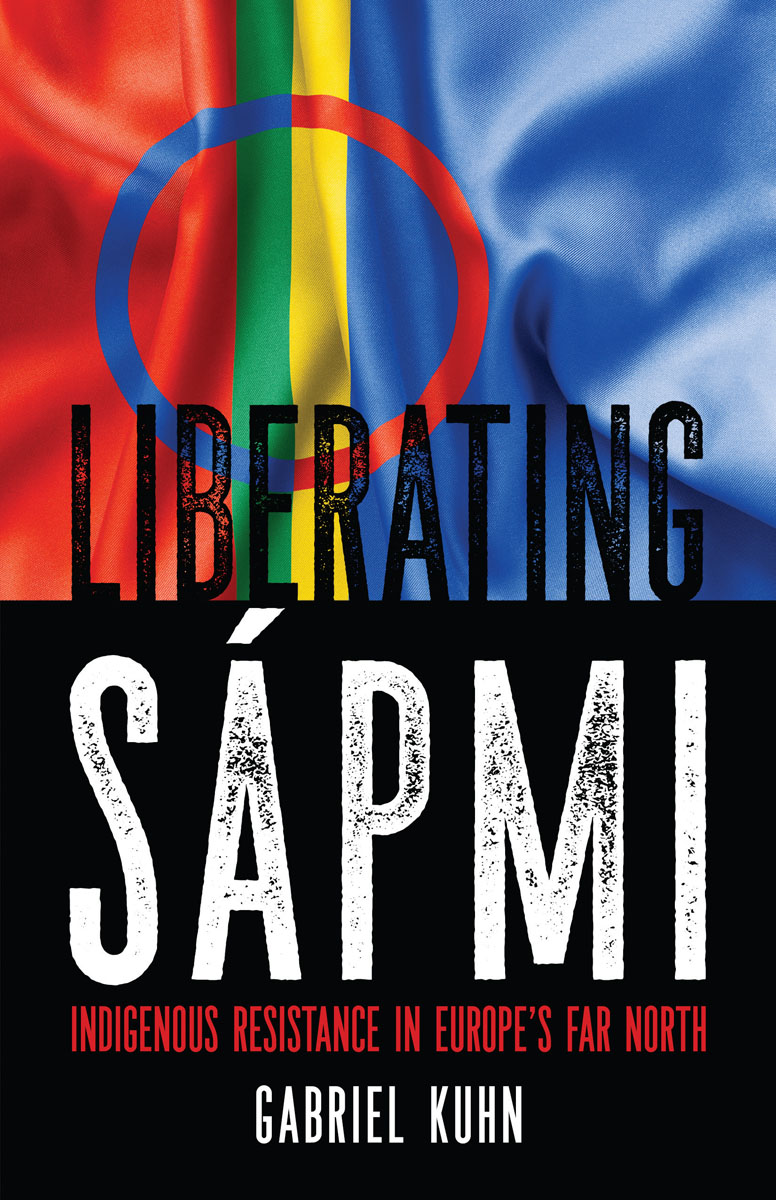
Liberating Spmi: Indigenous Resistance in Europes Far North
Gabriel Kuhn
2020 PM Press.
All rights reserved. No part of this book may be transmitted by any means without permission in writing from the publisher.
We have made every effort to identify and properly credit the images used in this book, but it is possible that errors and omissions may inadvertently remain. Notice of such should be sent to the publisher so that the necessary corrections may be made in any future editions.
ISBN: 9781629637129
Library of Congress Control Number: 2019933022
Cover by John Yates / www.stealworks.com
Interior design by briandesign
10 9 8 7 6 5 4 3 2 1
PM Press
PO Box 23912
Oakland, CA 94623
www.pmpress.org
Printed in the USA.
I grew up in a village of a thousand people in the Austrian Alps. My first association with indigenous peoples was a very romanticized notion of American Indians, a common feature in the German-speaking world.1 Once I turned sixteen, the interest turned more serious. Instead of exotifying novels, I began to read ethnological studies and became particularly interested in the political history of indigenous peoples and anticolonial resistance.
In the mid-1990s, I accepted a research assistantship at Arizona State University. It allowed me to attend lectures in an American Indian Studies program in the making. Pawnee professor James Riding In, today a director of the program, generously put up with my many questions, took me to relevant lectures, and introduced me to other American Indian scholars. Students from Arizonas Navajo and Hopi reservations shared their experiences with me. I will forever be grateful.
Before leaving the US, I made a trip to the Lakota Pine Ridge Reservation to get a firsthand impression of the place where the American Indian Movement (AIM) made its most memorable stand of the 1970s, with AIM activists occupying Wounded Knee, the site of a gruesome massacre committed by the US Army in 1890. It was a memorable trip, and my traveling companion and I owe two Pine Ridge mechanics who managed to fix the heating in our car, which had broken down in subzero temperatures.
In the late 1990s, I spent a couple of years in Australia and New Zealand to learn more about the situation of indigenous people there. I also stayed in New Caledonia for six months after becoming obsessed with the Kanak independence struggle.
In the year 2000, I traveled to Europes far north for the first time. I was curious about the Smi, the regions indigenous people whom I knew comparatively little about. I remember how strikingly similar their experience of colonialism seemed to that of other indigenous peoples. The foundations of their cultureaccess to land and water but also their traditional spirituality and forms of social organizationhad been eroded by settlers from the south who, in turn, had been sponsored by the governments of the fledgling Nordic nation-states. The disregard for the Smis way of life, the arrogance of their new masters, and the ruthlessness with which the latter established their rule seemed all too familiar. Material traits of Smi culture were destroyed, spiritual practices forbidden, and forced labor policies introduced. To this day, the colonial governments benefit immensely from the exploitation of Spmi. In the 2016 mainstream television series Midnight Sun, one of the first to feature Smi culture in a more nuanced manner, a Swedish helicopter pilot enlightens a French police officer who has come to the far north to help solve the murder of a French citizen, by stating: They have taken everything from the Smi except for reindeer herdingprobably because it is such hard work.
I moved to Sweden in 2007. At the time, it had never dawned on me to work on a book about the Smi. My interest in indigenous peoples has crept into my work here and there, but bigger projects I clearly saw as the domain of others, first and foremost indigenous authors themselves.
Yet, after a decade of living in Sweden, I began to wonder whether I might be able to make a contribution after all. I felt there was a need for an English-language book introducing the political struggle of the Smi to a broader audience. I knew from my travels that, in various countries, indigenous activists and their allies were interested in the Smi but found useful material hard to access. While a body of literature on the Smi exists in English, most publications are academic, expensive, and difficult to track down. And few focus on politicalrather than anthropological or culturalquestions.
The practical conditions seemed satisfying: while not being able to speak Smi obviously puts limits on any deeper exploration of the culture, my command of Swedish and the ability to read and understand Norwegian allows me to access political documentation and follow relevant debates. It also allows me to communicate with the vast majority of the Smi, 90 percent of whom live in Norway and Sweden, most of them using Norwegian or Swedish as their primary language. In addition, a well-established working relationship with PM Press meant that there was a committed independent publisher willing to take on the project.
What really motivated me to work on this book, however, was my frustration over the lack of interest in the Smi among the majority populations of the Nordic countries. I remember watching a prominent Smi artist participate in a TV program in which Sweden-based musicians travel to Memphis, Tennessee, to play music with locals. Each episode starts with the artist having a chat with the host upon arrival. In this particular episode, the host eventually said: So, you are a Smi. Can you tell me a little about the Smi? I know nothing about them. It was said nonchalantly; there was no shame or embarrassment. It was as if you were asking an ice stock sport enthusiast to tell you about ice stock sport because you didnt know anything about it, and no one could reasonably expect that you did.
Without doubt, the host meant well and is not to blame, as their approach revealed a much more profound problem: the majority of people in Swedenas well as in Finland and, albeit perhaps to a lesser degree, in Norwaysimply dont care about the Smi.2
While the disregard for the Smi people in mainstream society should have probably not come as a huge surprise, what really puzzled me was that it was not much different among political activists. Despite all pitfalls and shortcomings, almost all nonindigenous activists I knew in North America, Australia, and New Zealand aimed to be good allies to indigenous peoples. In the Nordic countries, the same circles reveal a surprising level of indifference.3 Sometimes, matters are even worse. When I raised the question with a longtime trade unionist in Sweden, he said that, historically, even the most radical of the miners in the far north had been racist.
This historical collision between a progress-oriented and industry-based Left on the one hand, and an indigenous people eager to preserve vast wilderness areas on the other, remains unresolved, even among left-wing activists who are more informed by autonomous and anarchist principles than traditional leftist institutions such as trade unions. For them, the contentious issues are environmentalism, animal rights, and nationalism. Is it okay for the Smi to object to wind farms on their land, as wind power is considered an important renewable energy source? Is it okay for them to fight hunting bans on wolves and other predators? Is it okay for them to frame their identity in terms that might appear nationalistic? While few on the left dare to openly criticize the Smi, these questions make many feel uncomfortable. And in a culture such as that of the Nordic countries, where avoiding uncomfortable issues often takes precedence over trying to resolve them, the consequence is that, well, they will not be resolved.
Next pageFont size:
Interval:
Bookmark:
Similar books «Liberating Sápmi: Indigenous Resistance in Europes Far North»
Look at similar books to Liberating Sápmi: Indigenous Resistance in Europes Far North. We have selected literature similar in name and meaning in the hope of providing readers with more options to find new, interesting, not yet read works.
Discussion, reviews of the book Liberating Sápmi: Indigenous Resistance in Europes Far North and just readers' own opinions. Leave your comments, write what you think about the work, its meaning or the main characters. Specify what exactly you liked and what you didn't like, and why you think so.

